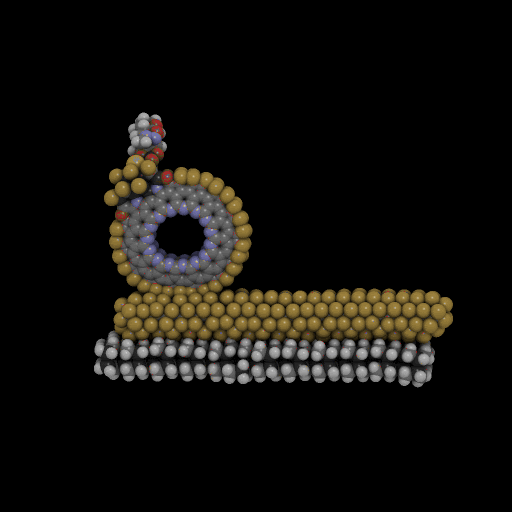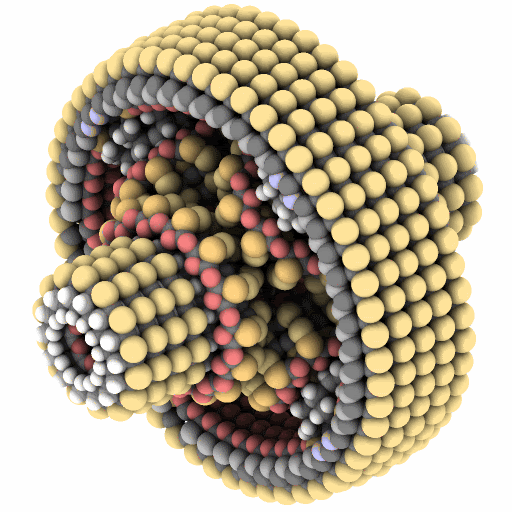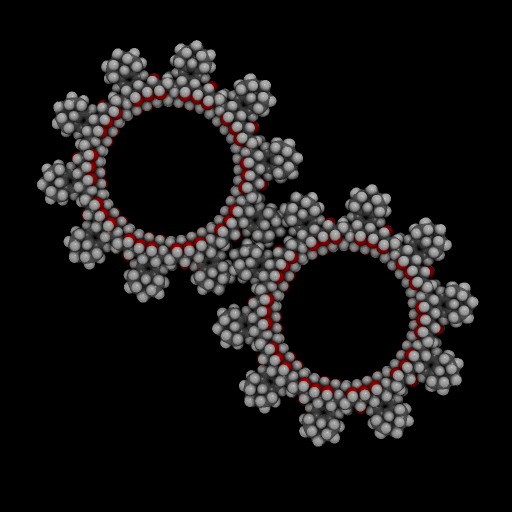All right I know it isn't an analytical engine, but it's interesting none the less. I have been spending a lot of time catching up on the state of the art in DNA nanotechnology. I have to say I am now a convert. I believe it will be a major enabling technology. Here is a piecewise example. Everything was done in NanoEngineer-1 Alpha 9.
First I inserted two DNA duplexes with 30 base pairs each. Here I am using the reduced PAM-5 model to represent them, but these are more or less the same things you have in your cells.

I positioned them over each other and lined up some phosphate groups on the back bone (displayed in purple).
Next I selected four phosphate groups and made what's called a cross over. You can do this manually or with just a click:

This is not just a trick of the software. There is a well established "wet" process to do this in the lab, or maybe kitchen depending on how you roll. Now the strands have been connected. Here is a color coded picture to show the new connections:

This arrangement is referred to as a Double Anti-Parallel Even Crossover (DAEX). This is the starting point for a lot of larger DNA motifs. Enzymes can be used to create sticky ends and bond the strands together. By dropping in a few more of these, a little arranging and bonding, and you can start to build up arrays like this:

Here I have changed the colors and display mode a little, but you can still make out the different chains.

This array has been synthesized in the lab. What is great about DNA is you can arrange a lot of atoms precisely and quickly. These arrays have been proposed as scaffolding for more complicated structures. Maybe something like this could happen (now I think I am getting speculative).
Here I have attached a thymine molecule to a cnt, just as a quick example.

However by creating additional sticky ends or nucleotide overhangs, you can use these arrays to precisely position other molecules. Maybe this specific example would not work, but you can get the just of the idea. That idea being if I drop a bunch of these thymine doped tubes into solution, they would attach themselves at predetermined positions on the array. Actually I think it would take more than the thymine-adenine hydrogen bond, but there are other ways to attach things, and the tube looks too cool to delete.
MTF

























